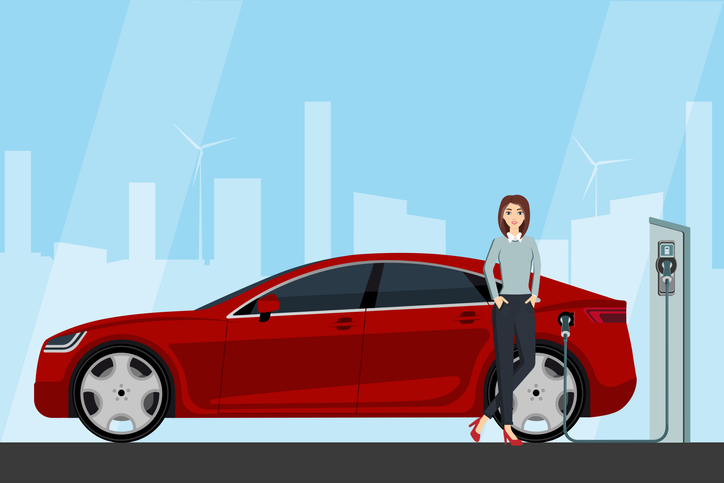The legislature is again considering subsidies for expensive electric vehicles (EV). Washington already has expercience with these subsidies and it wasn't good. The most accurate way to describe Washington state’s electric vehicle (EV) tax breaks, ironically, may be the old saying “bringing coals to Newcastle,” delivering something to exactly the place that needs it the least. As EV tax breaks in Washington state demonstrated, the policy’s primary outcome was to give money to the wealthy.
In their desire to turn the popularity of electric cars into political benefit, legislators in Washington state waived the sales tax on EVs, arguing it would provide an incentive to buy the cars and reduce CO2 emissions. Instead, the tax breaks ended up giving money to the wealthy who need no further incentive to buy an EV. The result was not only bad economic policy, it was bad environmental policy.
As in many other states, Washington state politicians compete to show off their “green” credentials. The result is a disjointed patchwork of subsidies and incentives that often fail to achieve their purported goals. These policies are, instead, designed to emphasize political image over environmental effectiveness. The EV subsidies are a case in point.
Washington state legislators adopted the EV sales tax exemption in 2009, claiming it would increase sales. At that time, it applied to all EVs, no matter how expensive. Subsequently, legislators scaled back the initiative to cover only those cars costing less than $42,500. Even those scaled back tax breaks went overwhelmingly to the wealthy.
We compared state data on model year 2017 purchases to the most recent tax data available, 2015, sorted by zip code to see where vehicles were being purchased. Overwhelmingly, EVs were purchased by people living in Washington state’s wealthiest zip codes.
For example, 42 percent of 2017 Nissan Leafs in Washington state were purchased by people living in the top 10% wealthiest zip codes. That is not much different than the buying pattern of the more expensive Tesla S vehicle, where the 51% of Tesla’s were purchased by people living in the top 10% wealthiest zip codes. The percentage of sales of Leafs and Teslas were virtually identical in the wealthiest 25% of zip codes, with 71.9% of Nissan Leafs and 72.6% of Teslas sold in those zip codes.
It is worth noting that many of the EVs purchased in lower-income zip codes were, in all likelihood, purchased by the wealthy. For example, six electric vehicles were sold in 2017 in the zip code 98584, which covers rural Mason County, a relatively poor part of the state. Two of those EVs were the second-most expensive EV available, the Tesla Model S. Although the average income in the zip code is $51,080, it is very unlikely someone with that income level could afford at car with a base MSRP of $68,000.
Ultimately, the subsidy policy did little to reduce CO2 emissions. Even if we assume the tax break incentivized all EVs sales outside the top 25 percent wealthiest zip codes, that accounts for only 30 percent of EVs. The average vehicle in the United States emits 9,880 pounds of CO2 annually, according to University of Michigan researchers. Over ten years, an EV would avoid about 44 metric tons (MT) of CO2. The average tax break for a Nissan Leaf in Washington state amounted to about $2,086, or $47.41 per MT reduced. If we assume 30 percent of EVs were purchased as a result of the tax break, that amount goes up to $158.03 per MT of CO2 reduced.
Compare that to California’s CO2 price of $15.10. Even with these generous assumptions, the sales tax exemption wastes 95 of every $100 spent to reduce CO2 emissions.
For those who argue climate change is a “crisis,” that waste should be tragic. Instead, many of the groups who argue “we can’t wait” to fight climate change, defend these wasteful programs by claiming it will help in the future. The data demonstrate that is simply untrue. The EV market in Washington state was not influenced by state subsidies, and sales continued to grow even as the tax break was narrowed. Instead of purchasing CO2 reductions, the sales tax exemption paid for a “green” image for politicians supporting the tax cut.
Other states also provide similar tax breaks. In Georgia, supporters of EVs point to a dramatic decline, about 80 percent, in sales after that state eliminated a $5,000 tax credit. Of course, if the tax credit is large enough it can induce higher-than-normal sales. If state politicians began handing out free EVs, many people would certainly take them up on the offer. The question, however, is how effectively that would reduce CO2 emissions.
Applying the same calculations above, and assuming that 80 percent of EV sales were a result of the tax credit, the cost per MT of CO2 reduced would still be $113.64. This price is actually higher in Georgia, because the state’s electricity sector emits five times as much CO2 per MWh as Washington state, reducing the overall CO2 benefit from EVs in Georgia.
Those who argue we cannot wait to fight climate change and lament the rise in income inequality should be vocal opponents of EV tax breaks. The data clearly show they not only subsidize the wealthy, they waste resources that could be put toward more effective CO2 reduction efforts.




